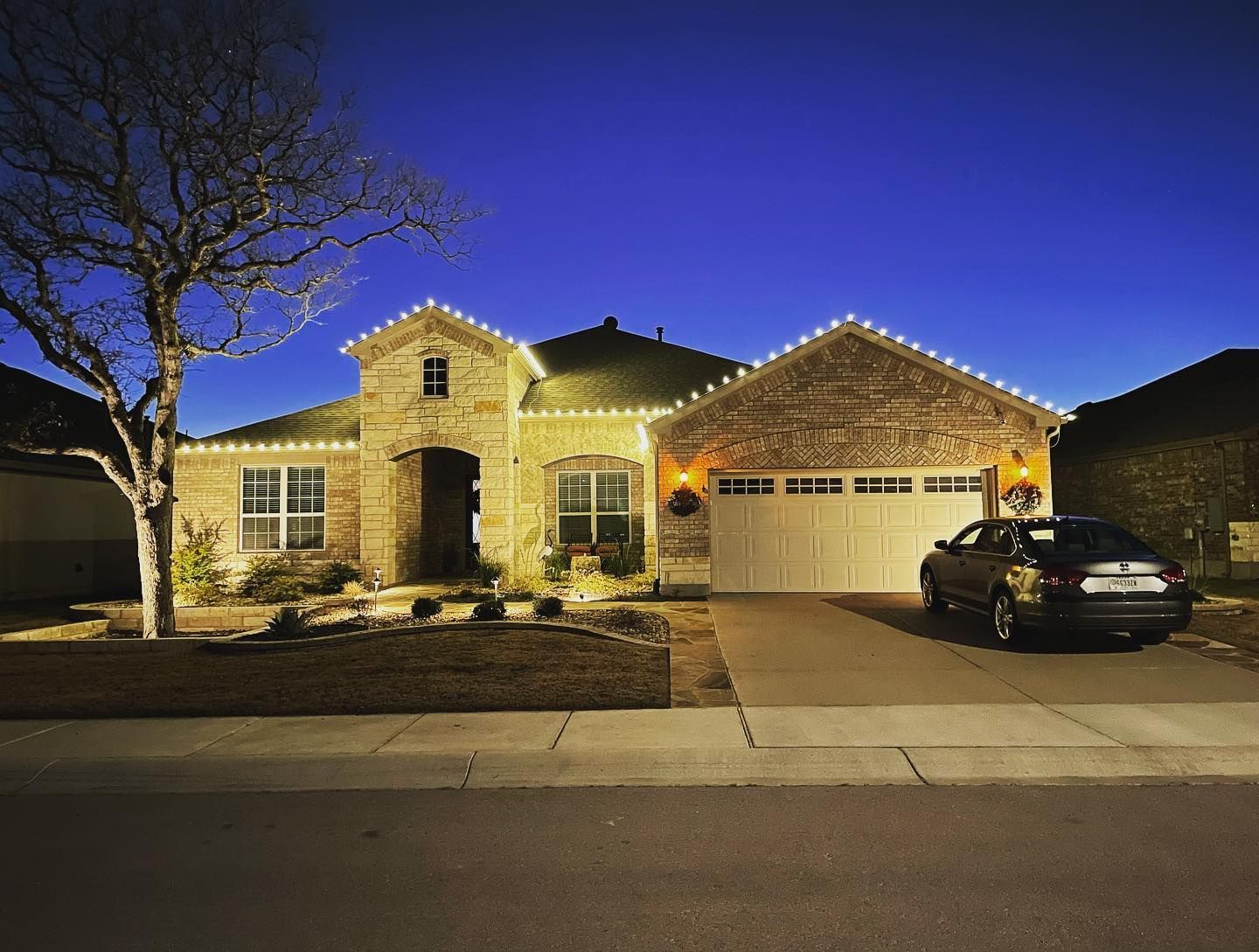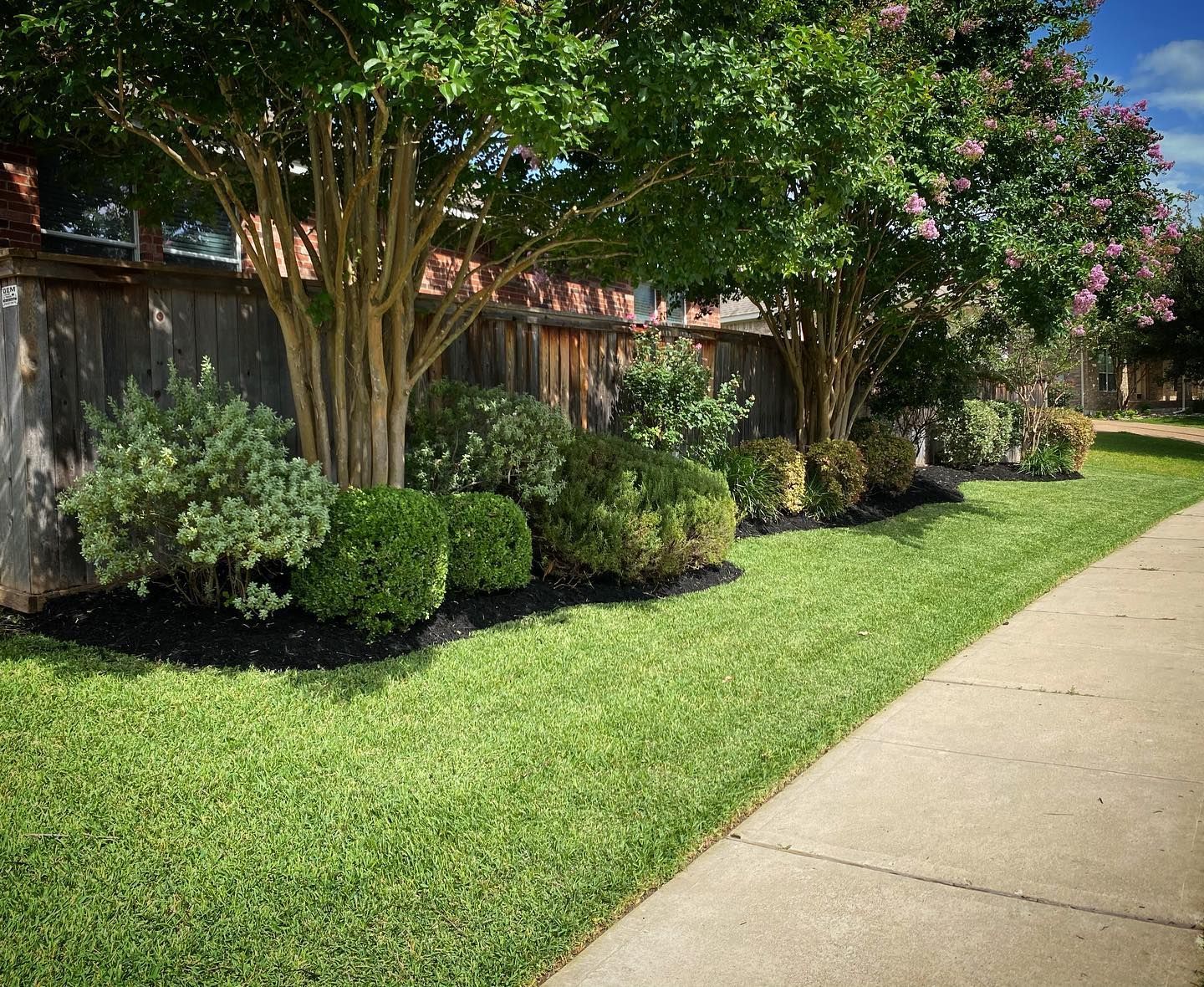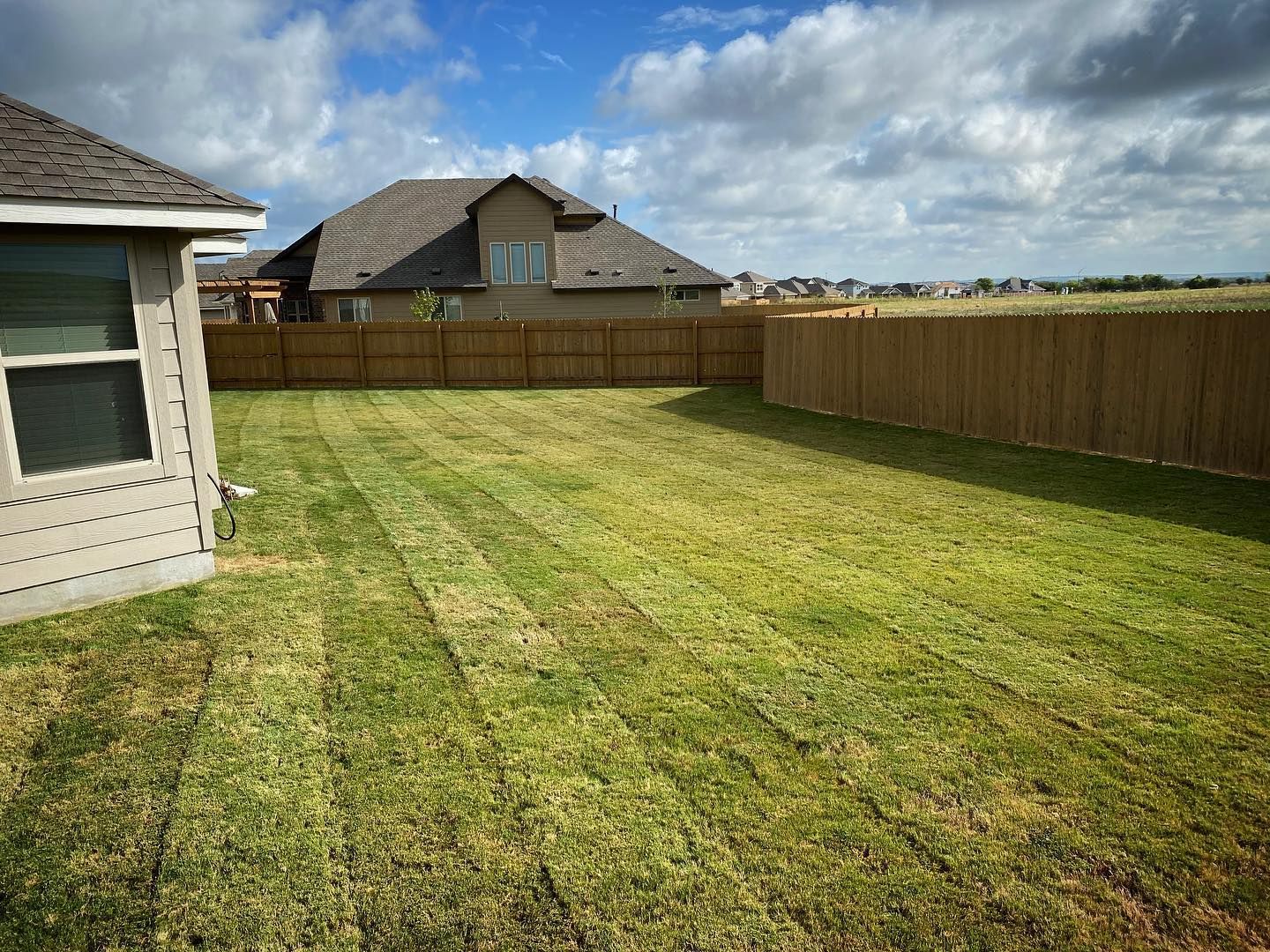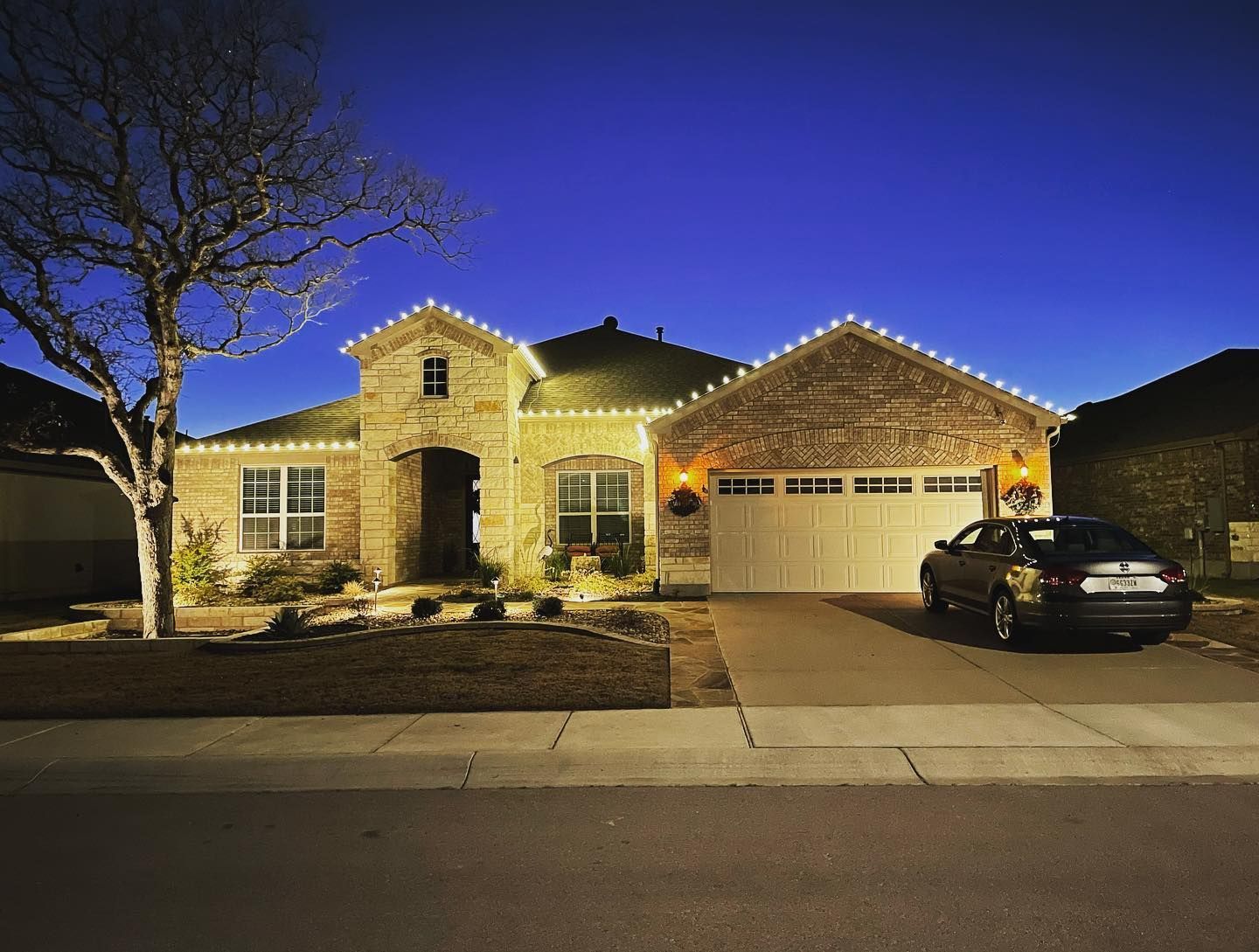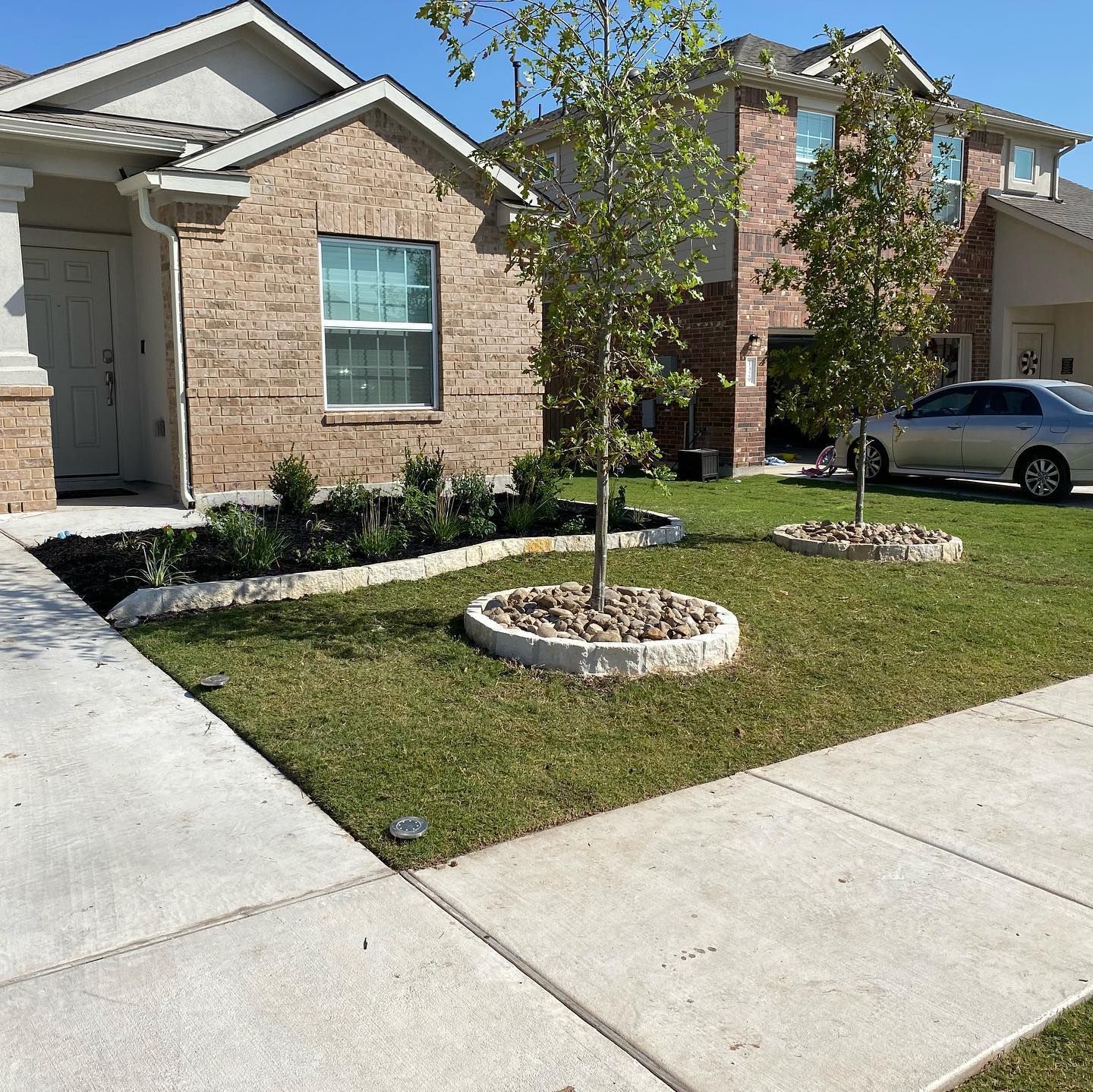A Homeowner’s Guide to Top Dressing
One of the most powerful—but often misunderstood—lawn services a homeowner can invest in is top dressing. When done right and timed well, top dressing can enhance soil structure, stimulate microbial activity, level out uneven lawns, and promote stronger, healthier grass growth. In Central Texas, where soil is often compacted and clay‑based, it can be a game-changer.
In this guide, you’ll learn:
- What top dressing is and how it works
- The benefits for your lawn
- How and when to top dress (especially in Georgetown / Round Rock)
- The right materials and techniques
- How top dressing complements aeration
- What to expect and common mistakes to avoid
What Is Top Dressing?
Top dressing refers to spreading a thin layer of material—typically compost, a compost-sand mix, or fine-screened soil—over the surface of your existing lawn. The goal is to gently blend that material with your lawn so it enhances the root zone rather than smothering it.
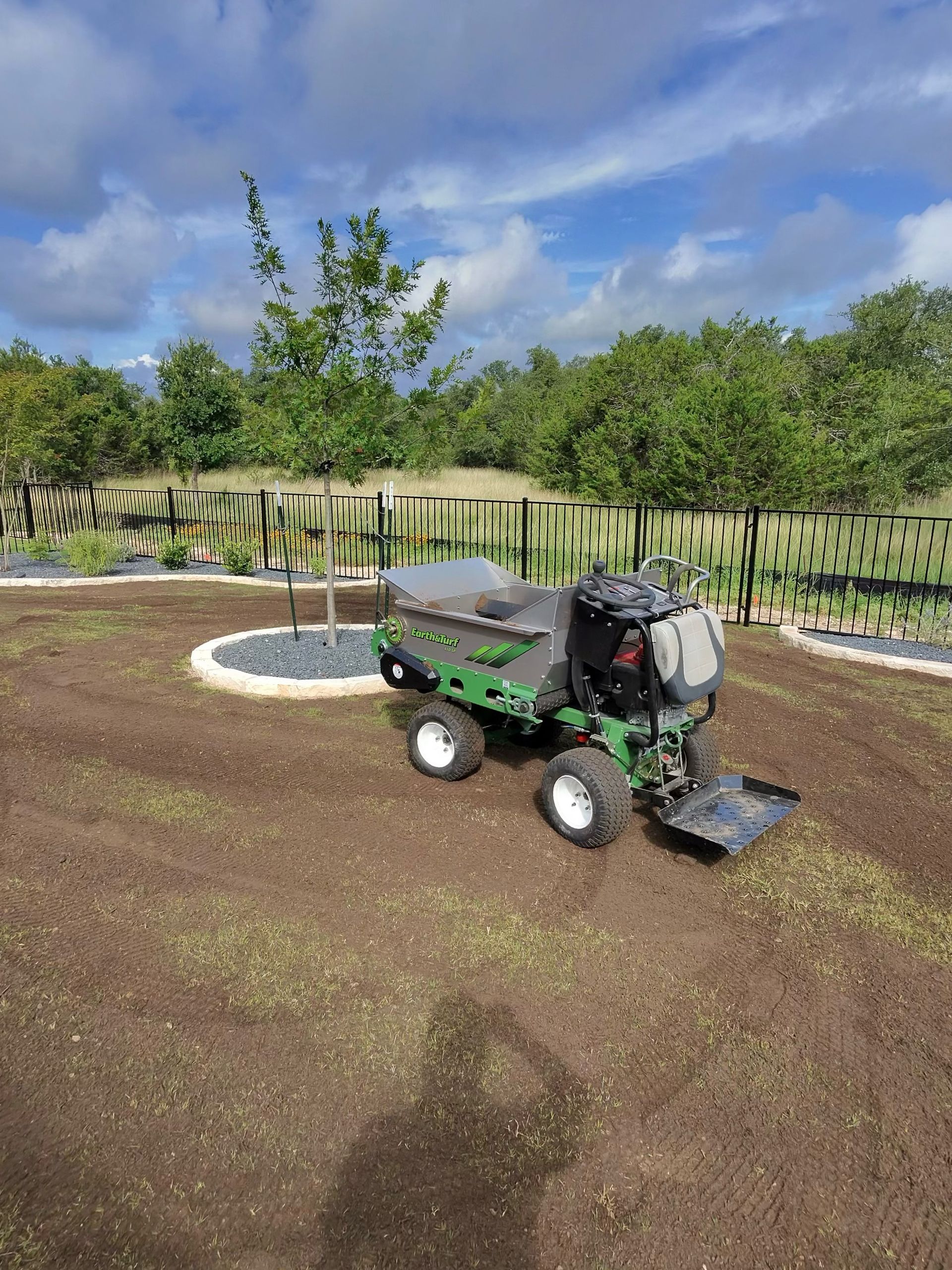
It’s not about dumping large amounts of soil; instead, it’s about making precise, incremental improvements. The top dressing settles into the turf and gradually works its way down, feeding soil biology and improving the environment for roots.
Top dressing is often paired with aeration, allowing the material to reach deeper into the soil through the aeration holes. Many experts argue that aerating before top dressing is ideal.
Why Top Dressing Is Valuable
Here are key benefits your lawn can gain:
1. Improves Soil Structure & Porosity
Many lawns, especially in Central Texas, struggle with compacted clay soils. Top dressing adds organic material that breaks up compaction, creates pore space, and helps water, air, and nutrients reach deeper roots.
2. Boosts Microbial Life & Nutrient Cycling
Organic matter supports beneficial microbes in the soil. These microbes help break down nutrients, making them more available to the grass roots.
3. Helps With Thatch & Decomposition
Over time, thatch accumulates. A thin top dressing layer can aid in breaking that layer down more naturally.
4. Levels Minor Bumps & Low Spots
If your lawn has dips or uneven areas, a bit of top dressing can smooth things out without full-scale grading.
5. Better Water Management
A healthier soil with organic matter retains moisture better and can reduce runoff. That means less wasted water and more effective irrigation.
6. Enhanced Turf Density
Over time, lawns treated with top dressing tend to fill in and thicken, reducing thin or bare patches and minimizing weed intrusion.
When & How Often to Top Dress in Central Texas
Timing matters. Top dressing done at the wrong time can stress your lawn rather than help it.
Ideal Time Windows
- After Aeration: Best when paired with fresh aeration, the holes created help the material settle more deeply.
- Spring to Early Summer: Typically, when warm-season grasses are in active growth.
- Avoid the Heat of Midsummer: Doing it during extreme heat risks stress on grass that’s already under pressure.
- Fall or Late Season (depending on grass type): Some lawns may benefit from an additional pass, but be cautious not to block sunlight or smother the roots.
Many lawn care providers in Georgetown, Texas choose one or two time windows per year for top dressing, such as spring and early fall.
Choosing the Right Material for Top Dressing
Not every soil or blend works equally well. Here are pointers:
- Use
clean, screened compost or compost mix with minimal rocks, weed seeds, or large debris.
- Avoid raw topsoil or “fill dirt” that may contain poor-quality materials or contaminants. Grassperson cautions that ordinary topsoil is often inferior.
- Some mixes use
a combination of compost and fine sand (e.g., 80% compost, 20% fine sand) to help break up clay and improve drainage.
- Ensure the material is fine and uniform so that it can work its way down between the blades of grass without smothering them.
Step‑by‑Step: How to Top Dress Your Lawn
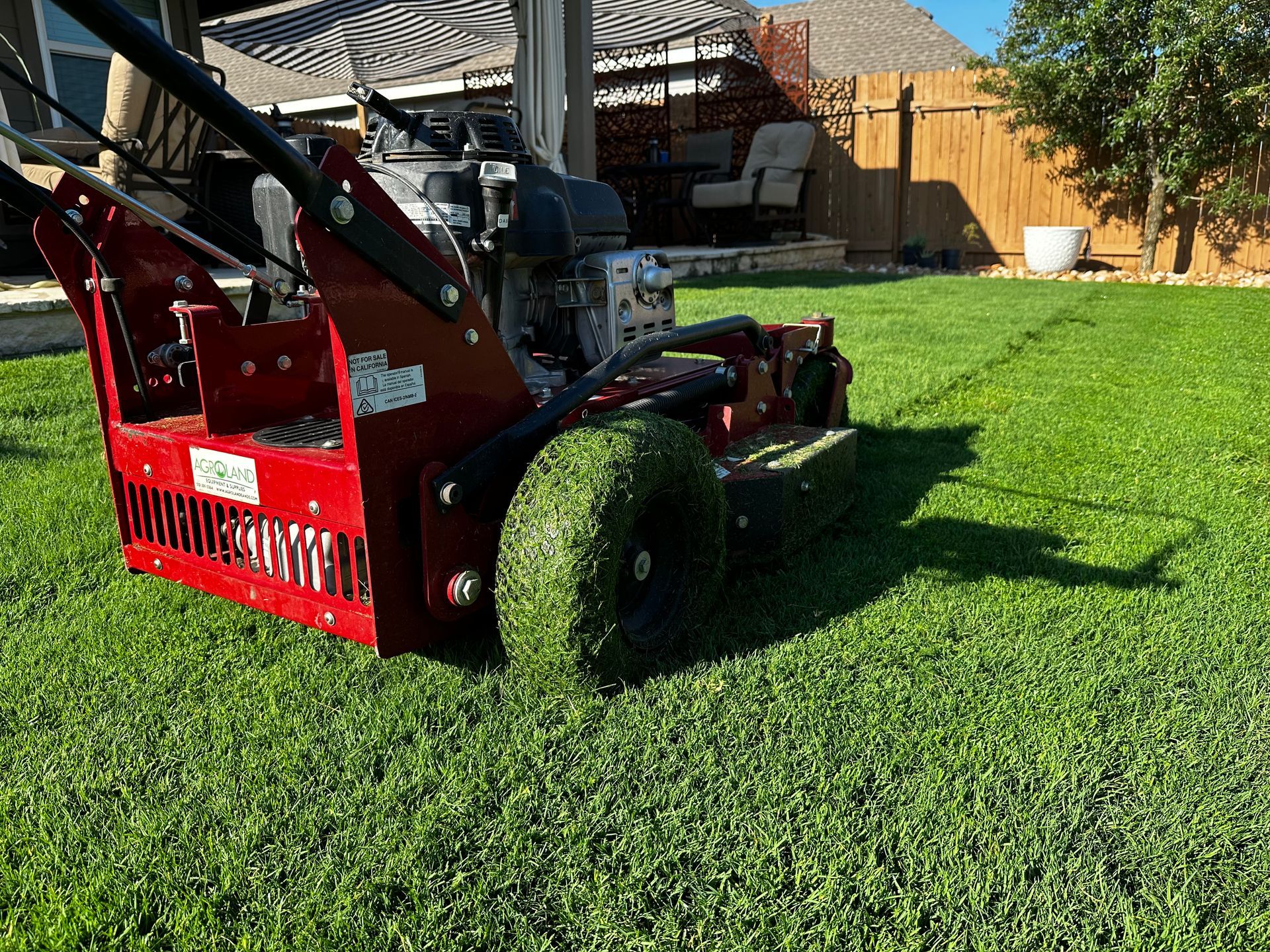
Here’s a typical process, simplified:
Prep the Lawn
- Mow slightly shorter than usual (but not scalping).
- Remove debris, sticks, and lawn clutter.
- If you have excessive thatch (>½ inch), consider dethatching first.
Aerate First (if possible)
As discussed above, aerating helps the top dressing settle deeper into the soil.
Apply Top Dressing Material
- Spread a thin, even layer—usually about ¼ inch or thinner. A general rule: you want grass blades to still peek through.
- Use a shovel, wheelbarrow, or a top-dressing machine if available.
Rake / Brush to Distribute
Use a drag mat, brush, or rake to work the material across the grass. The goal is to even it out and help it settle in.
Water to Settle
Light watering helps wash the material into the soil and start microbial activity.
Follow-Up Care
- Resume regular mowing after a week or so, once the roots and grass have recovered.
- Monitor for any smothered spots—if any area looks overly buried, lightly rake material off.
- Avoid heavy foot traffic until your lawn has fully recovered.
- Maintain irrigation, mowing, and routine care.
Top Dressing vs. Aeration: What Comes First?
A common question: Should you top dress before or after aeration?
Most professionals recommend aeration first, then top dressing immediately afterward. The reason is that the holes created by aeration allow the top dressing material to penetrate deeper and be more effective.
However, if aeration isn’t feasible, top dressing alone can still provide benefit. It may just act more as a surface amendment rather than something that improves deeper soil layers.
What to Expect Over Time
Top dressing is a long game. You won’t see dramatic overnight results, but over months and seasons, you’ll notice:
- Gradual thickening and greener lawn
- Better recovery from drought stress
- More even surface and fewer bumps
- Better ability to resist weeds and disease
- More efficient water use
The real value is cumulative—each application builds on the last.
Common Mistakes to Avoid
- Applying too much material (thick layers can smother grass)
- Using low-quality soil or compost with seeds, rock, or debris
- Top dressing in extreme heat or drought when the grass is under stress
- Failure to water in properly
- Neglecting follow-up care, such as mowing, watering, and monitoring
- Ignoring aeration (if top dressing without aeration, you miss out on the deeper benefit)
Why Hire a Professional (vs. DIY)
Top dressing isn’t always easy to do right, especially for larger yards. Here’s why many homeowners leave it to pros:
- Access to bulk material and screening
- Specialized equipment or top dressers for even spreading
- Knowledge of optimal mixes for local soil and climate
- Ability to combine with aeration, seeding, and other services
- Saves you the time, labor, and guesswork
Conclusion & Call to Action
Top dressing might not be the flashiest lawn treatment, but it is one of the most beneficial—and underused—tools in your yard’s health toolkit. Especially in Georgetown, Round Rock, and the surrounding Central Texas area, where heavy, compacted soils and seasonal stress are common challenges, regular top dressing can make a significant difference.
If you're curious whether your lawn could benefit from top dressing, or want a custom plan that includes aeration, sod, or other upgrades, we’d love to help.
[ Request a Free Top Dressing Quote ] | [ View All Services ]

